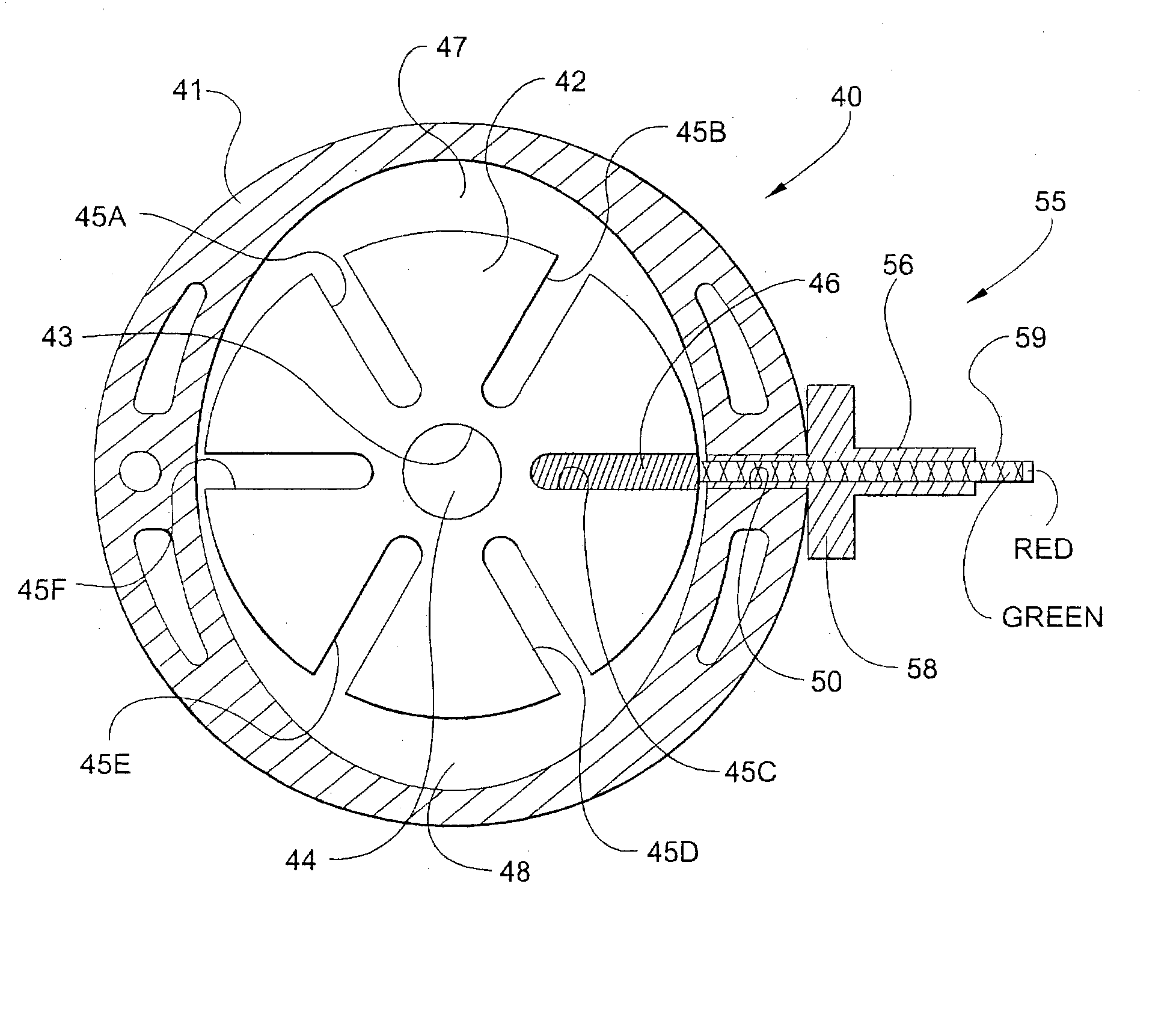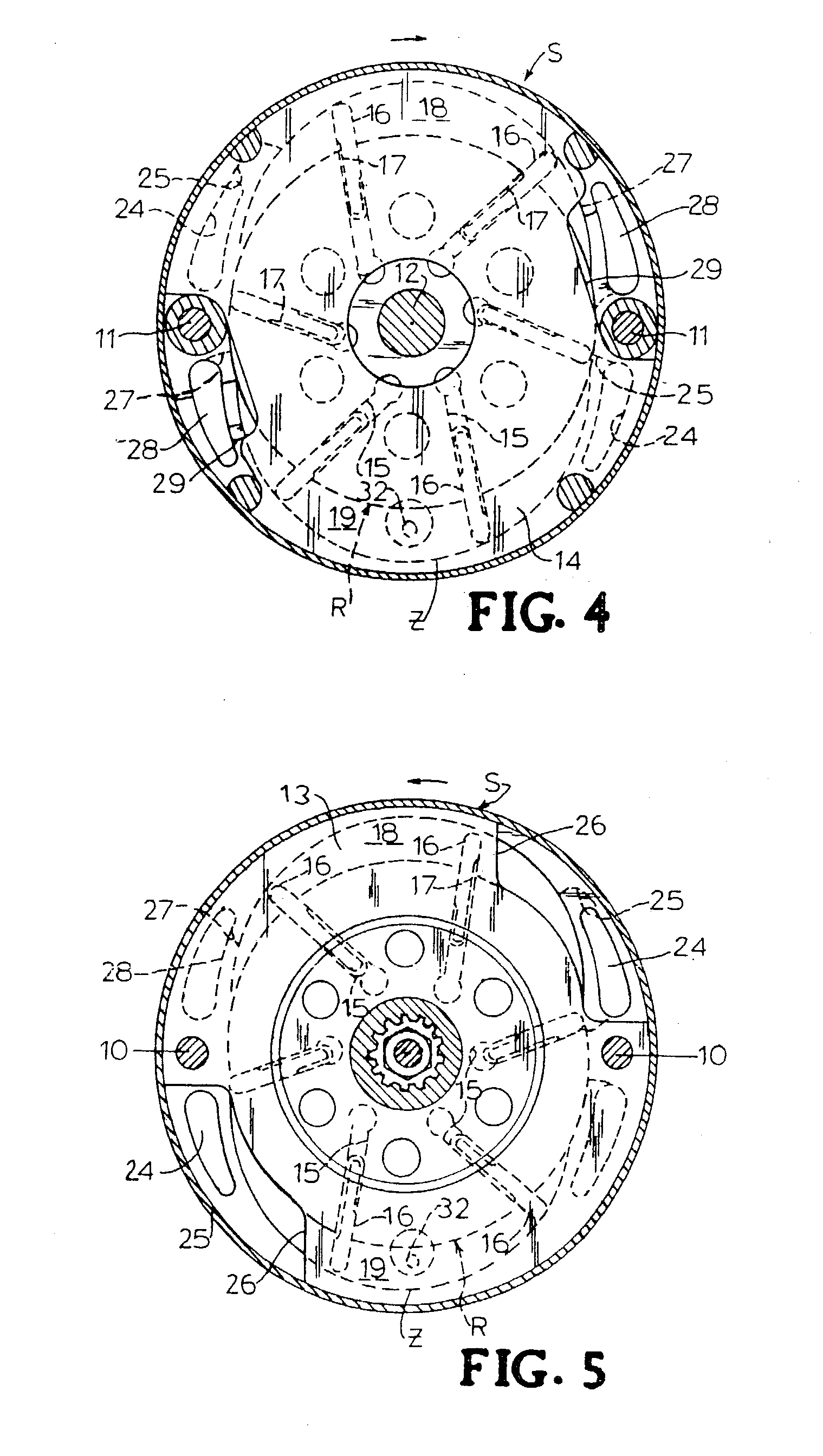Rotary vane pump with vane wear access port and method
a technology of wear access and vane, which is applied in the direction of rotary/oscillating piston pump components, machines/engines, liquid fuel engines, etc., can solve the problems of composite carbon parts that are similar in wear, chipping and fracture, and the nature of the vane lubrication technique is destructive to the pump
- Summary
- Abstract
- Description
- Claims
- Application Information
AI Technical Summary
Benefits of technology
Problems solved by technology
Method used
Image
Examples
Embodiment Construction
[0050] Referring now specifically to the drawings, a known vane pump is illustrated in FIGS. 1-5. As illustrated in FIG. 1, the rotary vane-type pump P has a central annular body or stator S, a rotor R, a front flange F secured to an inlet end of stator S, a back flange B secured to the outlet end of stator S, and a drive assembly D mounted on the front flange F for driving rotor R.
[0051] Front flange F and back flange B can secured to stator S by any known type of securing device as long as the pump parts S, F, and B are securely held in place during operation. FIGS. 2 and 3 illustrate the back flange B and front flange F being secured to stator S by two sets of screws 10 and 11, respectively. Each set of screws 10 and 11 are diametrically opposed on back flange B and front flange F. Preferably, back flange B and front flange F are mounted to stator S such that screws 10 are coaxially aligned with screws 11. Back flange B is provided with a central stud 12 which extends into and at...
PUM
 Login to View More
Login to View More Abstract
Description
Claims
Application Information
 Login to View More
Login to View More - R&D
- Intellectual Property
- Life Sciences
- Materials
- Tech Scout
- Unparalleled Data Quality
- Higher Quality Content
- 60% Fewer Hallucinations
Browse by: Latest US Patents, China's latest patents, Technical Efficacy Thesaurus, Application Domain, Technology Topic, Popular Technical Reports.
© 2025 PatSnap. All rights reserved.Legal|Privacy policy|Modern Slavery Act Transparency Statement|Sitemap|About US| Contact US: help@patsnap.com



